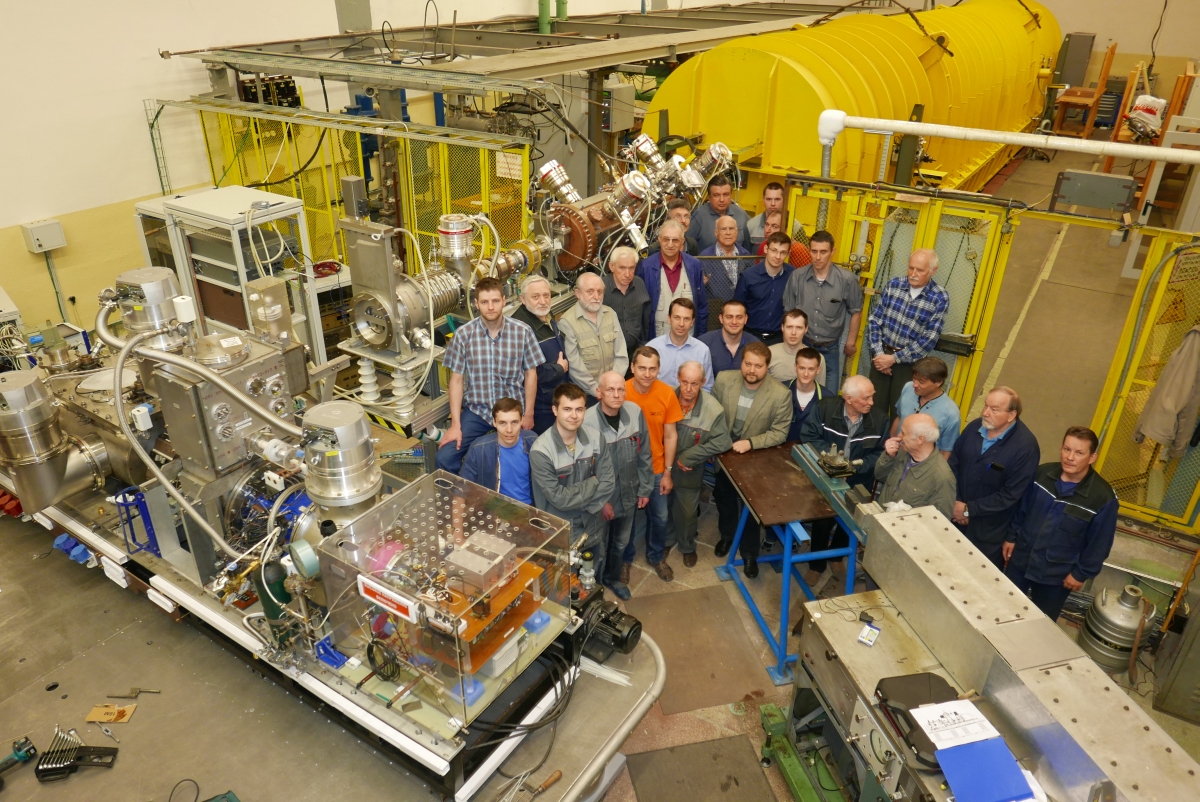New linear accelerator of deuterons and light ions was commissioned
News, 27 May 2016
A new linear accelerator of deuterons and light ions for the construction of the NICA Collider which is being constructed was successfully commissioned in the Joint Institute for Nuclear Research; the linear accelerator was developed in the collaboration of JINR – NRNU MEPhI – NRC KI ITEP – RFNC VNIITF.
The project to create a new linear accelerator designed for injection of protons and deuterons, including polarized and light ions, in the accelerator complex “Nuclotron” and the NICA Collider started in late 2011. The main objective of the project is to replace a high voltage electrostatic pre-injector, launched over 40 years ago, with a modern accelerator with uniformly space quadrupole focusing. In the course of implementation of the project, an accelerator was designed, manufactured and successfully launched; it allows proton and light ion beam acceleration at currents up to 10 mA up to energy 150 Kev/nucleon with the subsequent injection to the existing linac LU-20 and the Nuclotron. The project was implemented by a team of specialists from JINR (supervisors from JINR: Vice-Director RAS Corr. Member G.V.Trubnikov, Head of the VBLHEP Accelerator Department A.V.Butenko, Consultant at the VBLHEP Directorate V.A.Monchinsky), NRNU MEPhI (supervisors from NRNU MEPhI – Associate Professor of the Department of Electrophysical Facilities S.M.Polozov) and NRC “Kurchatov Institute” ITEP (supervisor from ITEP – Head of the Laboratory of Advanced Development Associate Professor of the MEPhI Chair of Electrophysical Facilities T.V.Kulevoy).
After two years of design work, engineering documentation has been prepared and a resonator of the accelerator has been made in the pilot factory of the All-Russia Research Institute of Technical Physics (Snezhinsk). A high-frequency power supply system has been also developed and made in ITEP. After manufacturing, adjustment and testing, the accelerator was transported to Dubna and installed in the “Injector Hall” of the accelerator complex “Nuclotron”. Physical launch of the new accelerator was held in December 2015.
During the preparation for the summer shift at the “Nuclotron”, a new injector was mounted as a part of the accelerator complex and from 16 to 20 May 2016, a beam was successfully injected into LU-20 and accelerated up to the design energy of 5 MeV/nucleon. The results of the work were presented at large international accelerator conference – the 7th International Particle Accelerators Conference IPAC’2016, which was held in mid-May 2016 in Pusan (South Korea).
At present, the injection complex is being prepared for operation with the new source of polarized protons and deuterons. Future plans include development of a new superconducting linear accelerator of protons and light ions at energy 30 (50) MeV which will replace LU-20 that is becoming obsolete and worn out. The Protocol on the participation in the new superconducting accelerator project was signed in April 2016 by the leaders of JINR, MEPhI, ITEP, the Belarusian State University, the Physical-Technical Institute of the National Academy of Sciences of Belarus, the Belarusian State University of Informatics and Radioelectronics and the Scientific and Production Association “Scientific-Practical Materials Research Centre of NAS of Belarus”.
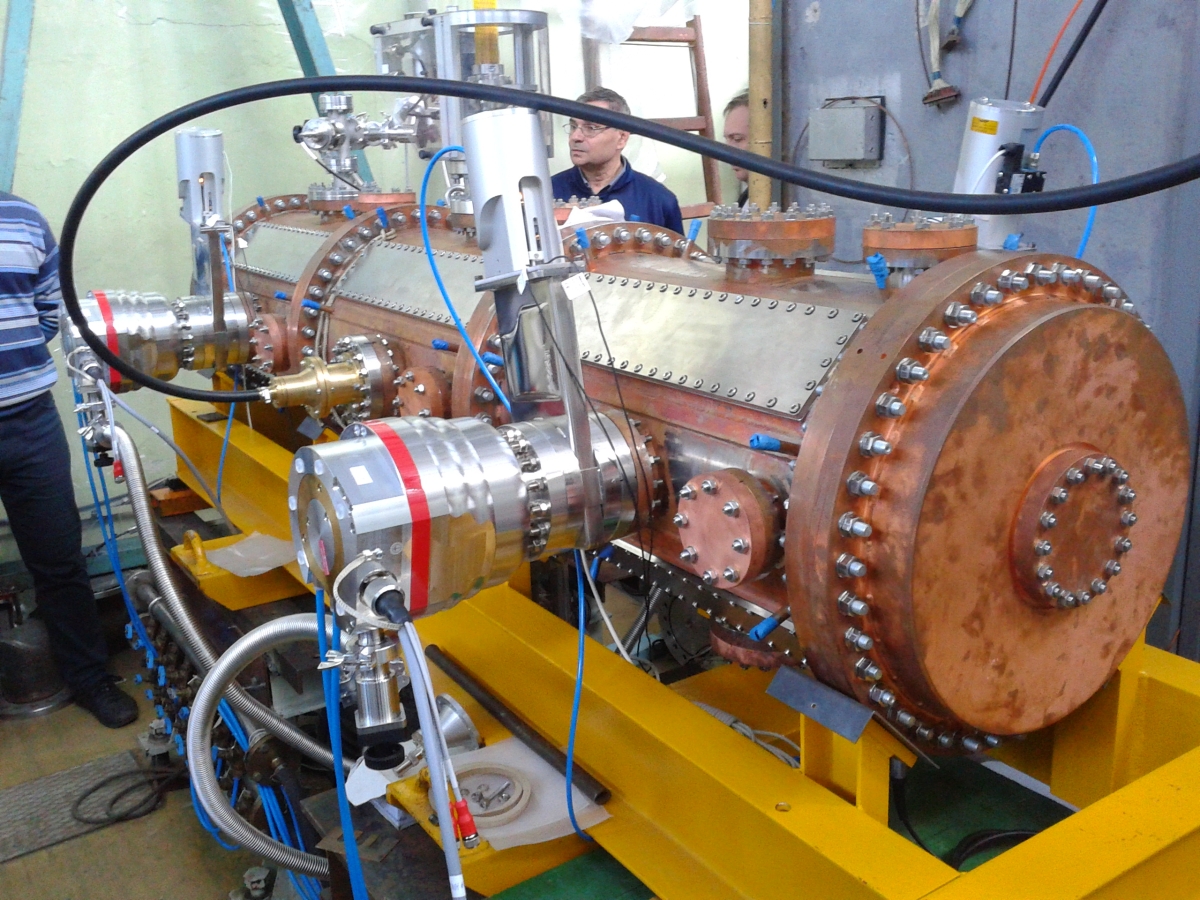 Resonator of the accelerator during testing and commissioning
Resonator of the accelerator during testing and commissioning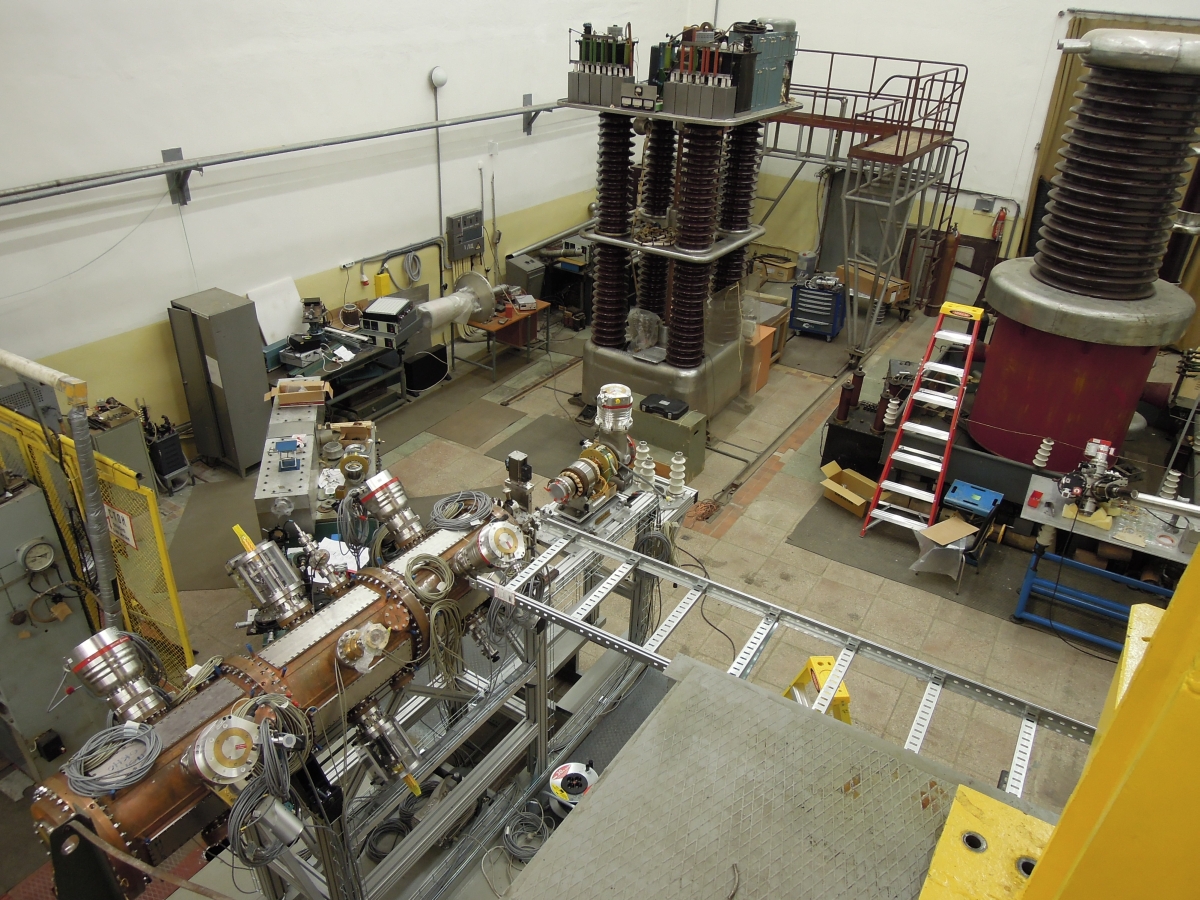 Installation of the new accelerator in the “Injector Hall” of the accelerator complex “Nuclotron”
Installation of the new accelerator in the “Injector Hall” of the accelerator complex “Nuclotron”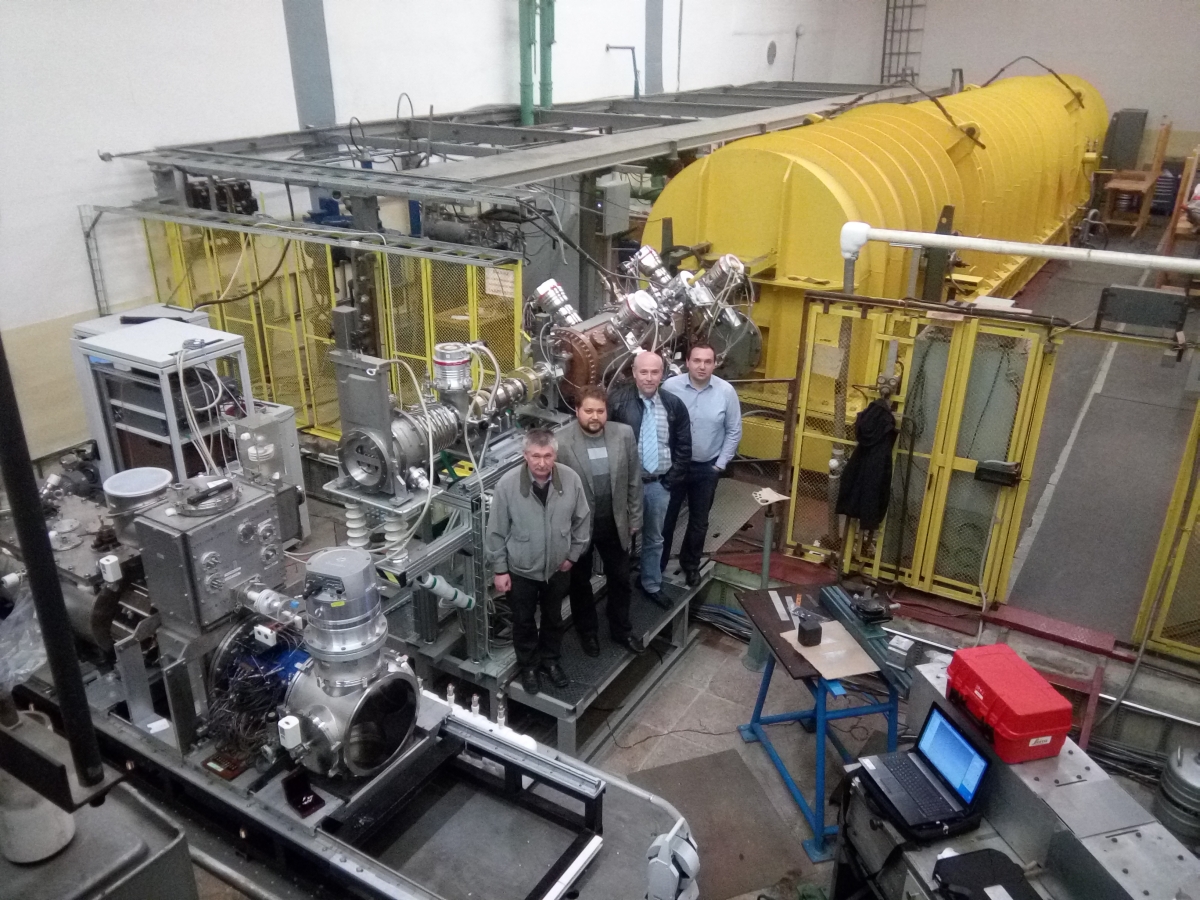 Upgraded light ion injector and (from left to right): Chief Engineer of the “Nuclotron” E.M.Syresin, A.V Butenko, T.V.Kulevoy, S.M.Polozov
Upgraded light ion injector and (from left to right): Chief Engineer of the “Nuclotron” E.M.Syresin, A.V Butenko, T.V.Kulevoy, S.M.Polozov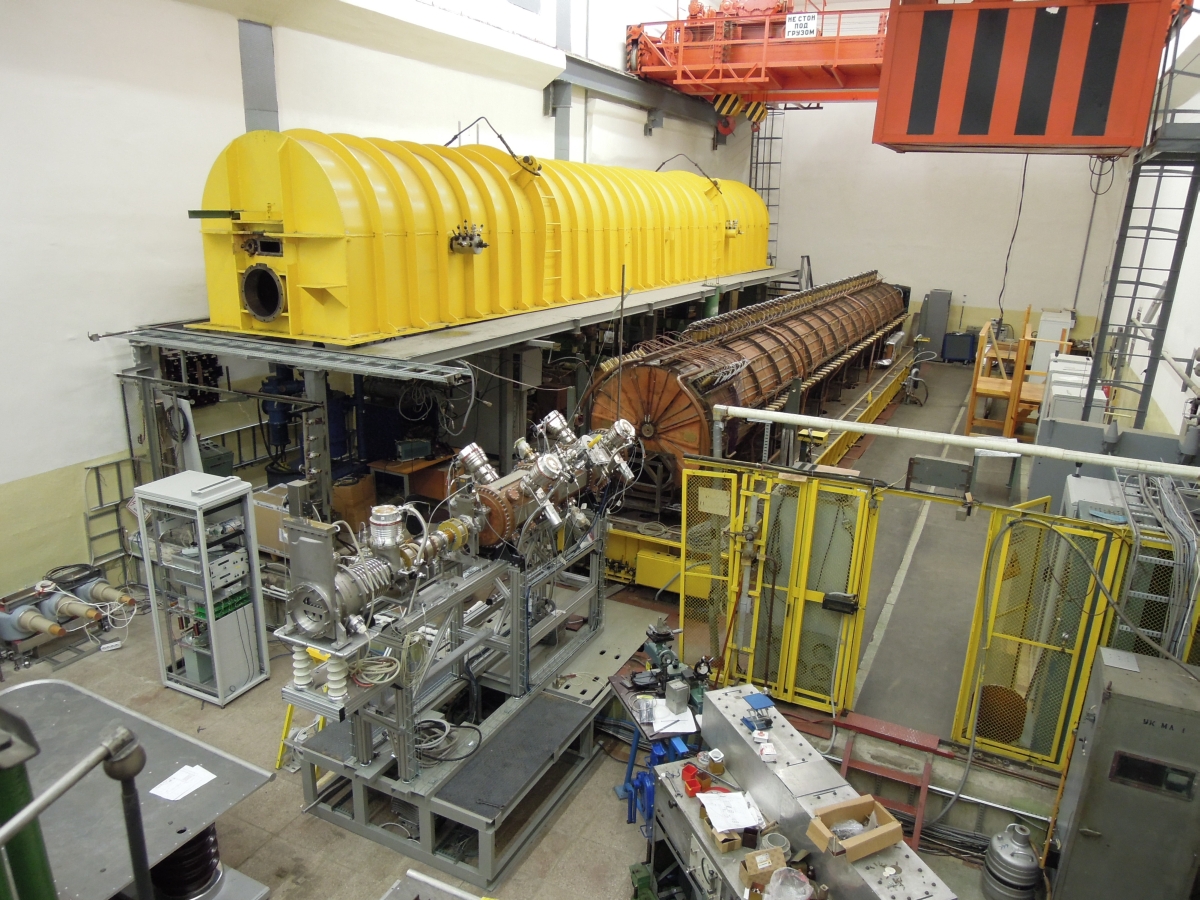 “Injector Hall” for the accelerator complex “Nuclotron” in preparation for launch: in the foreground is the new injector with a laser ion source, hereinafter – the accelerator LU-20 with removed vacuum jacket
“Injector Hall” for the accelerator complex “Nuclotron” in preparation for launch: in the foreground is the new injector with a laser ion source, hereinafter – the accelerator LU-20 with removed vacuum jacket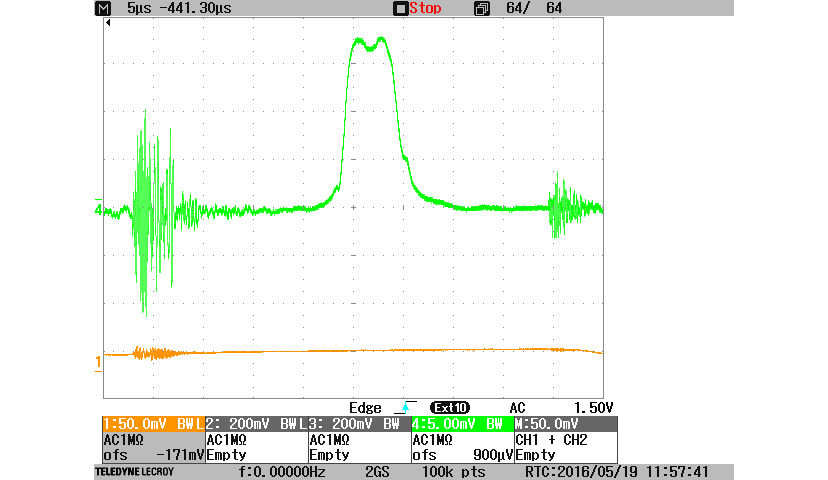 Acceleration of deuterons at LU-20 with RFQ. The green beam –output of LU-20, yellow – input. 100 Ω resistance in both cases. The signal output from LU-20 with the suppression of secondary emission (FC), on the entrance – no (collector)
Acceleration of deuterons at LU-20 with RFQ. The green beam –output of LU-20, yellow – input. 100 Ω resistance in both cases. The signal output from LU-20 with the suppression of secondary emission (FC), on the entrance – no (collector)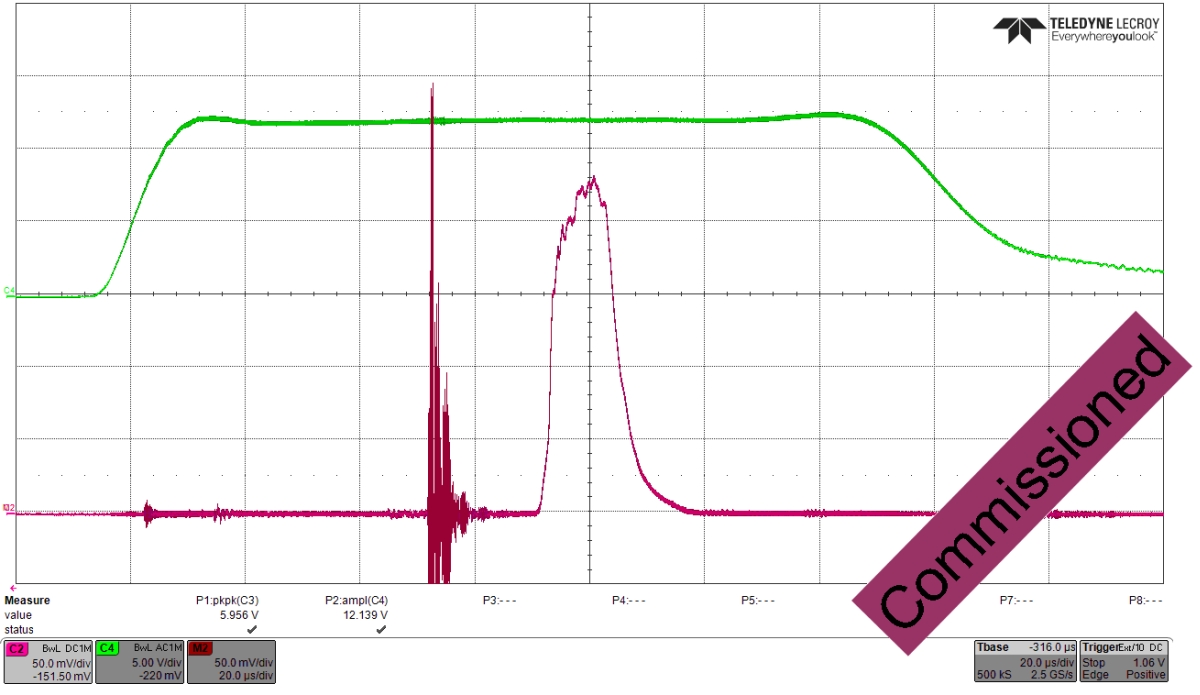 Waveform of deuteron ion beam accelerated in the new injector
Waveform of deuteron ion beam accelerated in the new injector
